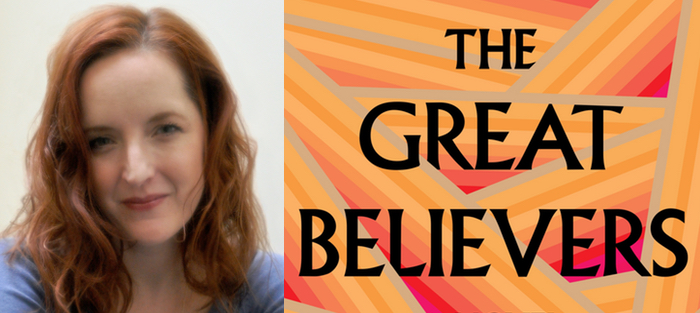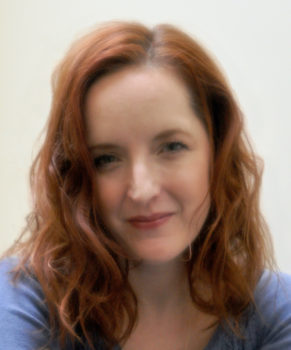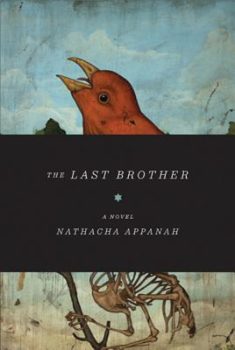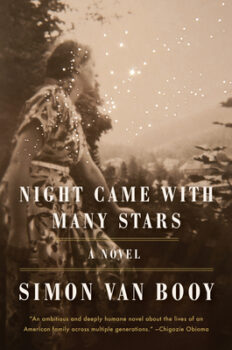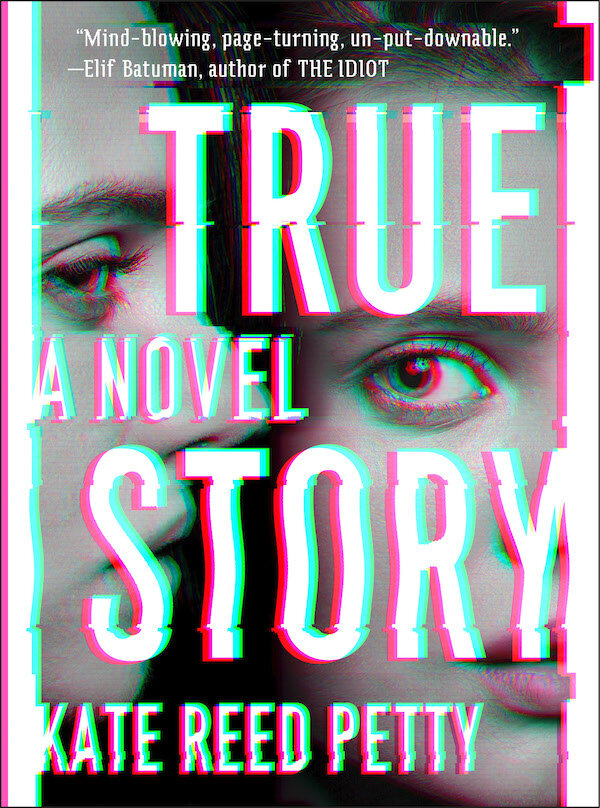Rebecca Makkai’s third novel, The Great Believers (Viking), tells the story of the AIDS crisis in 1980s Chicago. Following careful research, she weaves between this time and locale and that of Paris in 2015, braiding together the story of a small community of friends and family whose lives were shaped by crisis. Doing so she renders a moving portrait of the role art plays in making sense of and girding us for both the beauty and horror of our lives.
Rebecca was my instructor at StoryStudio’s Novel-in-a-Year workshop five years ago, and I first interviewed her for Fiction Writers Review in 2015 on the release of her short story collection Music For Wartime (Viking). She is one of the lynchpins of Chicago’s literary community, a generous and gifted writing teacher, and a wicked wit.
We conducted this interview via email shortly after The Great Believers made the cover of the New York Times Book Review and Rebecca’s appearance on Late Night with Seth Meyers to promote the novel.
Interview:
Jennifer Solheim: I’m going to make a jerk move by asking a deceptively simple question to begin. The raison d’être of The Great Believers is the story of the AIDS crisis in 1980s Chicago. You had the idea before the 2015 Paris attacks to set the contemporary narrative there. But then this leads me to wonder: why Paris?
Rebecca Makkai: Actually, Paris came first. But it was 1920s Paris, which is now only a subplot in the book (and we’re never there in scene). I wanted to write about a woman who’d been an artist’s muse around WWI, and things evolved from there. (This was all before I even started writing; for every novel, I spend a few months stewing on things and working it out mentally, and it was during this time that it really shifted to being a book about AIDS.) When I realized—quite a way into the process—that I wanted a contemporary narrative in there as well, it made sense to me to bring things full circle and have Paris in the book quite literally, rather than just in memories.
There are, in fact, three narrative crises woven into the novel: AIDS, the Paris attack in November 2015, and the art scene in Paris after World War I, although the last is woven in obliquely (and so elegantly) through a quest to salvage lost sketches by Modigliani and other luminaries. How did that third story come into being? At what point did you realize that the power of art was so significant to the story you were telling about the 1980s AIDS crisis?
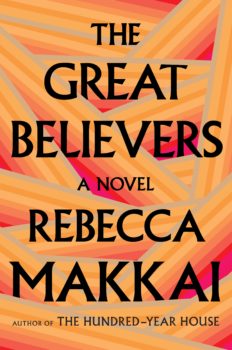 It really always was a story about art, from the beginning. The other art thread, which is the work of a photographer named Richard Campo in both the 80s and 2015, came about organically in part because I was inspired by some real-life art. In researching gay life in 1980s Chicago, I’d come across the photo series Marginal Waters, by Doug Ischar, chronicling life on the Belmont Rocks (a sunbathing and cruising spot). I became interested in the question of who was allowed to photograph whom, and where, and why, and so when I needed slides to be shown at the memorial party that starts the book, I thought they might have been taken by someone who was also photographing gay spaces around the city. (I always want to point out that although I was inspired by Ischar’s work, Richard is not based on him, and his art isn’t directly based on his.) I didn’t know when I wrote that scene what a big role Richard and his photographs would play in the story, but at a certain point it became clear to me that since Richard’s photographs would outlive everyone, they needed to be a big part of the ending.
It really always was a story about art, from the beginning. The other art thread, which is the work of a photographer named Richard Campo in both the 80s and 2015, came about organically in part because I was inspired by some real-life art. In researching gay life in 1980s Chicago, I’d come across the photo series Marginal Waters, by Doug Ischar, chronicling life on the Belmont Rocks (a sunbathing and cruising spot). I became interested in the question of who was allowed to photograph whom, and where, and why, and so when I needed slides to be shown at the memorial party that starts the book, I thought they might have been taken by someone who was also photographing gay spaces around the city. (I always want to point out that although I was inspired by Ischar’s work, Richard is not based on him, and his art isn’t directly based on his.) I didn’t know when I wrote that scene what a big role Richard and his photographs would play in the story, but at a certain point it became clear to me that since Richard’s photographs would outlive everyone, they needed to be a big part of the ending.
While there are essentially three narratives woven through the novel, the central story is about Yale Tishman. First of all, that name! I love how his first name functions in the novel across generations (and then, of course, there’s Tishman Hall at Bennington College). How did you decide which details about Yale’s story to tell either in the Chicago narrative or the Paris narrative?
I didn’t know there was a Tishman Hall—so cool! His name was originally Yale Dishman, and then a couple of early readers told me that was distracting. And it was hard to justify that name being Jewish.
We always have to make decisions regarding when and how we reveal information about our characters, even when we’re dealing with a straightforward, linear narrative. In this case, I knew that there were things about the end of Yale’s story that he was not necessarily the best narrator for—which is partly why I added Fiona’s point of view to begin with. As for what I revealed when, it was largely a matter of instinct. Often, when Fiona remembered something about the 80s, I was learning it for the first time myself.
The plot and narrative arc in this novel are, simply put, jaw dropping. It’s like a trapeze act—plot and arc à la Cirque du Soleil. I mean, seriously, it’s so complex and so deft. How did you approach this aspect of writing The Great Believers?
Oof. There’s a point in time when you’re holding it all in your head, but after it’s all done you can’t remember what you did or how you did it. I do think that for complicated projects, it’s really helpful to have big, uninterrupted swaths of time. I worked on this book at several different artists’ residencies, and although I could poke away at it from home, without those three- or four-week stretches I don’t think I could have concentrated on the whole messy thing for long enough to see the shape of it.
At one point, three days before it was due to my editor, I decided I needed to wildly redo the structure. I had pages all over my office floor, and tiny shreds of color-coded notecards, and I was incapable of human conversation. I put it all back together again, and it worked. Except an hour before I had to send it, I realized there were two 1980s chapters back to back. More frantic shuffling, and I hit send. Of course, I had time to revise after that, but it felt quite final, and it was all terrifying.
I’m really not answering this question, am I? I guess what I’m saying is: It was a huge mess, and somehow I sorted it out. I looked nothing like an acrobat while doing it.
Then there’s the careful research in the novel—how big of a role did research play in shaping the story?
A huge one. This was not a story where I could get things wrong, or fudge things, or make things up. I researched in layers—first, getting the lay of the land before I wrote, and then researching big issues (like the experience of HIV testing in 1986) as they came up, filling in details I’d left blank. And the whole time I wrote, I was meeting with as many people as I could just to hear their stories and, in some cases, to get missing details. I didn’t base any characters on real people, but I needed emotional research, not just factual research—and it could only be done in person. There was some paper-based research too, but it tended to be primary sources (gay weeklies from the 80s) as there’s next to nothing in book or film form about Chicago during the crisis. I met with survivors, activists, doctors, nurses, journalists, historians… And then on top of the AIDS research, I had to do a lot of research into the Paris art world of the teens and 20s, gallery acquisition, modern day Paris, cults, etc. The thing is, imagination and empathy can only take you so far. There were so many things I’d have gotten wrong on my own, things that would have taken someone who lived through this time right out of the story.
I’m always trying to convince my students that they need to do research for almost everything they write. If your character is a second grade teacher, and you are not a second grade teacher, you need to sit down and talk to a second grade teacher. Because whatever you think you know about that life is likely taken from film (which at worst gets it wrong and at best presents clichés) or from your own outside impression or memories (and listen, you were seven, you probably didn’t really pick up on everything).
This book has been out only since late June and already sold through four print runs. You were a guest on Late Night with Seth Meyers in July. You are seasoned as a published author at this point: The Great Believers is your fourth book, your third novel. In the runaway success of this one, what’s different this time around, in the experience of publication, reception, and looking forward with your writing?
I’m so grateful for everything that’s happened, but no, it’s not a runaway success, and I never expected it to be. A runaway success is a book where it doesn’t matter what the author does, the book just has a momentum of its own. (Anthony Doerr could have hidden in a cave about a week after All the Light We Cannot See came out, and it would’ve sold the same number of copies.) I’ve gotten some amazing coverage, and people have been so supportive, but the book is far from being a New York Times bestseller, and I’m out there doing everything I can to put it in more people’s hands. I have a book festival every weekend this fall (in one case, two of them), I’m still writing essays that tie in to the book, I’m still driving around the Midwest to do events on my own long after my official tour is over. This feels like a bigger deal than my previous books, but it’s still in that category of a book that I have to keep pushing, keep standing behind. Word of mouth helps so much, and you just hope some kind of momentum keeps things going.
I’m not complaining in the slightest, and don’t want to sound that way, but I think it’s important for readers and writers to understand that just because you see a particular book a lot of places, that doesn’t mean it’s a bestseller or that it’s got a life of its own. When my story collection (Music for Wartime) came out, we got great coverage, and people kept telling me they were “seeing it everywhere.” (Not buying it, mind you, just seeing it.) The coverage was so lovely, but it was a story collection, so it sold about a fifth of what my previous books had.
Mostly, the difference for me this time has been reader reaction. I feel like people are talking about this one more online, tagging me in really lovely posts, and I’m getting incredible emails from people who’ve been personally affected by AIDS. That kind of thing really never happened before. I’d get emails from people saying, “I liked your book,” but this time I’m getting long letters about people’s own lives, things about how they reacted emotionally to the story and the characters. That’s kind of magic, and it makes me want to be a better writer. It makes me want to connect this strongly with readers next time too, not just write into the void. Art for art’s sake is a great thing, but when you can also be part of a bigger conversation, I think that’s a lot more fulfilling.

